Diversity on deck
The face of skateboarding evolves as inclusivity ramps up
Advertisement
Read this article for free:
or
Already have an account? Log in here »
To continue reading, please subscribe:
Monthly Digital Subscription
$0 for the first 4 weeks*
- Enjoy unlimited reading on winnipegfreepress.com
- Read the E-Edition, our digital replica newspaper
- Access News Break, our award-winning app
- Play interactive puzzles
*No charge for 4 weeks then price increases to the regular rate of $19.00 plus GST every four weeks. Offer available to new and qualified returning subscribers only. Cancel any time.
Monthly Digital Subscription
$4.75/week*
- Enjoy unlimited reading on winnipegfreepress.com
- Read the E-Edition, our digital replica newspaper
- Access News Break, our award-winning app
- Play interactive puzzles
*Billed as $19 plus GST every four weeks. Cancel any time.
To continue reading, please subscribe:
Add Free Press access to your Brandon Sun subscription for only an additional
$1 for the first 4 weeks*
*Your next subscription payment will increase by $1.00 and you will be charged $16.99 plus GST for four weeks. After four weeks, your payment will increase to $23.99 plus GST every four weeks.
Read unlimited articles for free today:
or
Already have an account? Log in here »
Hey there, time traveller!
This article was published 12/07/2021 (1614 days ago), so information in it may no longer be current.
Skateboarding is having a moment.
Once just a popular subculture, the sport has not only become mainstream, it’s about to hit the big-time as it makes its debut at the Tokyo 2020 Summer Olympics this summer.
And that momentum is being bolstered by female and non-traditional skateboarders who are determined to grow the sport.
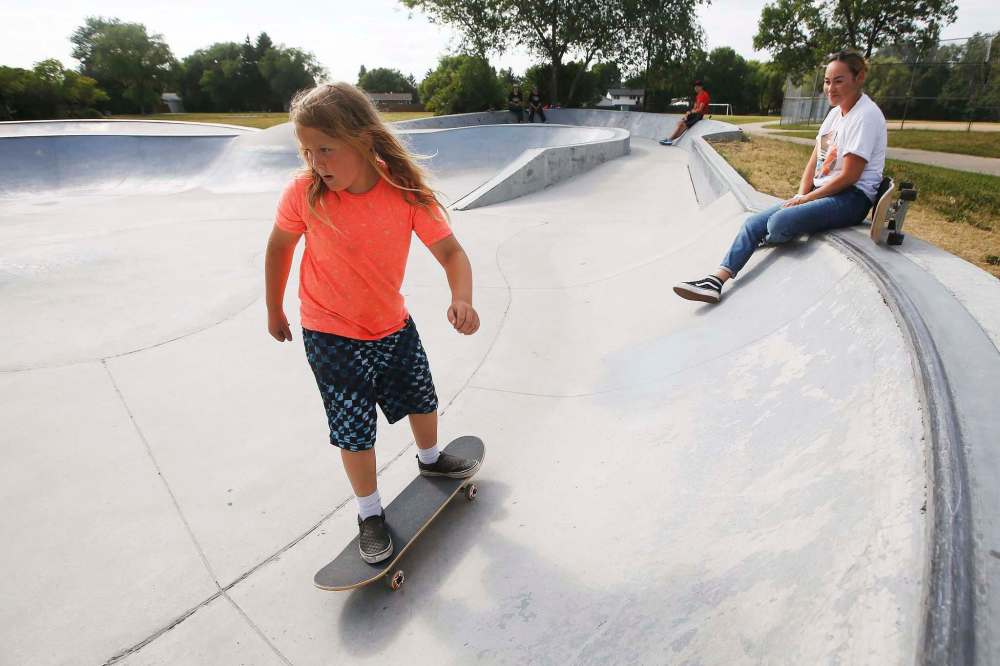
The skateboard was invented in California around the middle of the 20th century and although women have long been participants, they have not always been afforded the same visibility as men — and the gap is even more glaring for gender-nonconforming riders.
Canadian LGBTTQ+ pro-skater Annie Guglia will provide a boost not only to the visibility of the sport but also to the women and queer athletes who make up the community. She is a lesbian and will represent Canada as one of 12 skaters to make up the country’s first national skateboard team at the Olympics.
Non-traditional skateboarders have always been part of the culture, even if they haven’t always enjoyed the same professional opportunities. Indigenous skaters Joe Buffalo and Rose Archie co-founded Nations Skate Youth, a non-profit organization that empowers Indigenous youth through the positive impact of skateboarding. Elissa Steamer is the first female skater to be featured in the Tony Hawk video game franchise, and both queer skater Alexis Sablone and non-binary skater Leo Baker are part of the first-ever U.S. Olympic skateboarding team competing in Tokyo.
While skateboarding has largely been seen as a white boys’ club of competitions, sponsorships and paycheques, there is growing diversity within the sport. This shift has created more representation for BIPOC (Black, Indigenous and people of colour) and female skaters.
Jaimie Isaac
Jaimie Isaac, a Winnipeg-based Anishinaabe artist and curator and a member of Sagkeeng First Nation in Treaty 1 territory, first started skateboarding in Selkirk when she was 13 years old.
“I had one girlfriend who skateboarded with me and the rest were all my guy friends. That was pretty indicative of the time in terms of the gender ratio of skateboarders,” she says. “As much as my guy friends were supportive, I’d hear ‘You’re good for a girl.’ That was something that came up often.”
Once Isaac moved to Winnipeg in high school, she skateboarded on the streets and in parkades and parking lots.
“There weren’t a lot of skateboard parks at the time. This was the mid-’90s,” she says.
Growing up, Isaac says media representations of the sport all looked the same.
“Magazines would mostly be white dudes. I loved snowboarding and skateboarding videos and I was always excited when they featured a woman,” she says. “You didn’t see a lot of Indigenous women or men and very rarely would you see people of colour featured in videos. I think that was unconsciously affecting me at the time.”
In 2016 Isaac curated the exhibition Boarder X at the Winnipeg Art Gallery, which highlighted elements of skateboarding, snowboarding and surfing from artists of Indigenous nations across Canada. The exhibition celebrates the intersection of culture, art and boarding practices.
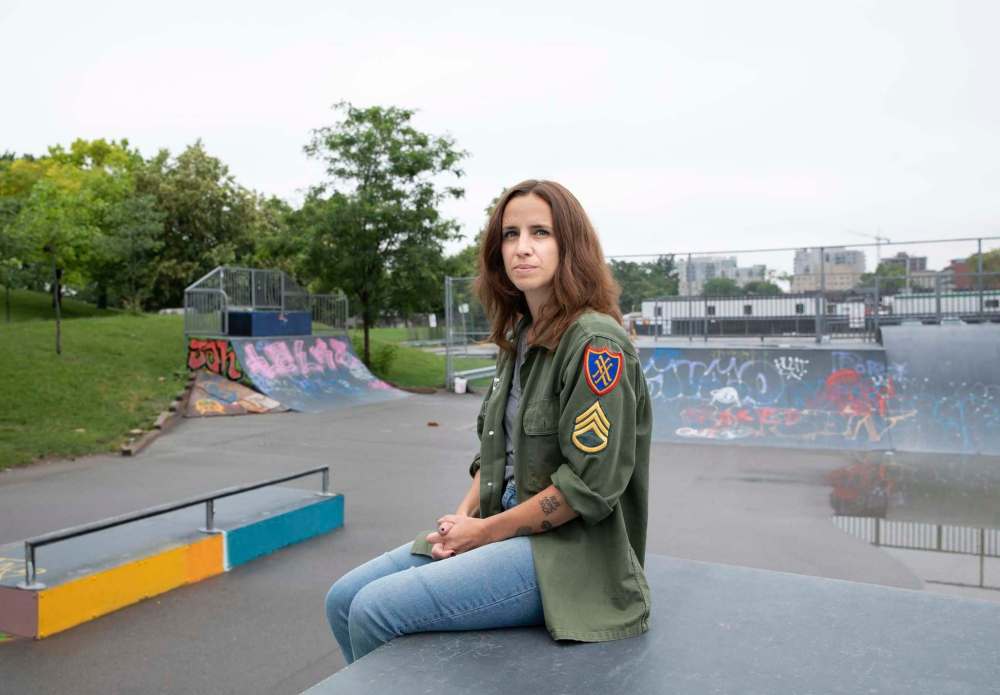
“When I thought about the exhibition around Boarder X, I had started travelling quite a bit and meeting like-minded Indigenous artists who were also skateboarders, snowboarders and surfers, and drawing connections in that way,” she says.
Isaac was inspired to bring Indigenous artists together and wanted to draw a connection to skateboarding, surfing and snowboarding from the lens of Indigenous people who participate in them. In Boarder X, these practices are vehicles to challenge conformity and stereotypes as well as demonstrate knowledge and relationships with the land.
“I learned respect and reverence for the land,” she says. “Surfing, skateboarding and snowboarding share a connection with and a deep respect for land and water.”
Boarder X featured Colonialism Skateboards, founded in 2015 by Mike Langan of the Cote First Nation on Treaty 4 territory. The company makes skateboard decks that highlight Indigenous peoples’ perspectives, history and culture. Langan worked with Cree artist Kent Monkman for the show.
“The collaboration with Kent Monkman gave a history lesson on Indigenous culture and colonialism in Canada,” Isaac says. “It’s a really incredible company that (Mike) started because he’s educating through skateboarding and art.”
Isaac also worked with skateboarders and artists Peatr Thomas, Hanwakan Blaikie Whitecloud and Graham Constant. They partnered with Vans Canada to build a half-pipe in the WAG’s Eckhardt Hall that featured Indigenous skateboarders demonstrating their skills.
The exhibit has toured across Canada; in 2021, it won an outstanding achievement award from the Canadian Museums Association.
Isaac says representation in skateboarding has grown significantly — she’s met several groups that focus on Indigenous engagement in sports, including Nations Skate Youth and the Indigenous Life Sport Academy.
“I wish as a youth I had seen more women to be less intimidated, (as well as) more people of colour and more Indigenous people,” she says. “I think it would have felt a lot more inclusive.”
Now, years after she did her first ollie and frontside 180, it’s a full-circle moment for Isaac as she’s relearning the sport with her eight-year-old son, James.
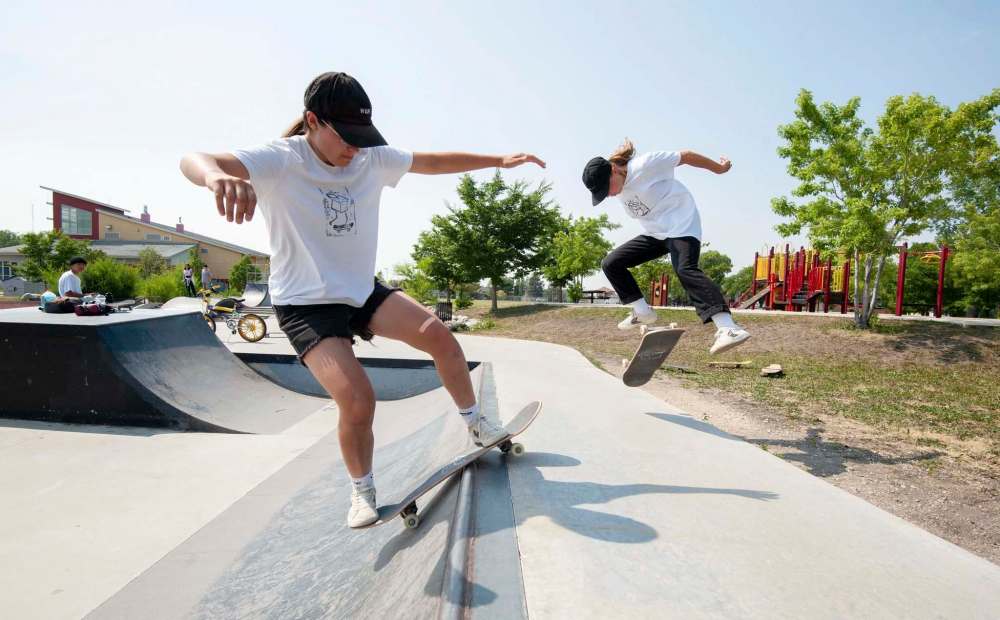
“It’s a huge source of pride to see him skateboarding and having an interest in it,” she says. “I started him off snowboarding when he was four and then later he wanted to pick up skateboarding. Now, he’s interested in skateboard camps.”
For Isaac, it’s about sharing experiences and education with her son.
“(Skateboarding) is what I grew up with,” she says. “It’s intergenerational knowledge of sharing what you know and it’s amazing that I can share it with my son.”
Jacqui Compayre
Jacqui Compayre was involved with the Skateboard Coalition of Manitoba, which spoke on behalf of skateboarders in the province, from 2006 to 2011.
“(The coalition) initially started in order to have an organized voice when it came to advocating for skateboarding in the province,” she says. “Some important issues really needed skateboarders’ input — like city-planned outdoor parks or bylaws that needed to be changed.”
Compayre, who now lives in Toronto, started skateboarding when she was 14 and fell in love with the sport, using her dad’s old banana board until she eventually got one of her own. When she was a kid, she didn’t know any other girls who skated.
“I loved it but felt out of my element, like I was going against my gender or something,” she says. “It can be intimidating to skate with a bunch of guys when you’re the only girl. It can be hard to have any confidence, plus, you’re being paid more attention to than you’d like because you’re different.
“All of a sudden you’re representing your whole gender and that can be a lot of pressure.”
She says those feelings can discourage girls from skateboarding, though it has become more acceptable.
“I’m hoping that with more females and female-identifying skaters in the scene, maybe it won’t be such a boys’ club anymore,” she says.
Over the years, the conversation around gender in skateboarding has evolved. Female skateboarders have seen increased presence onscreen. The 2019 documentary about young Afghan skaters, Learning to Skateboard in a Warzone (If You’re a Girl), won an Oscar last year.
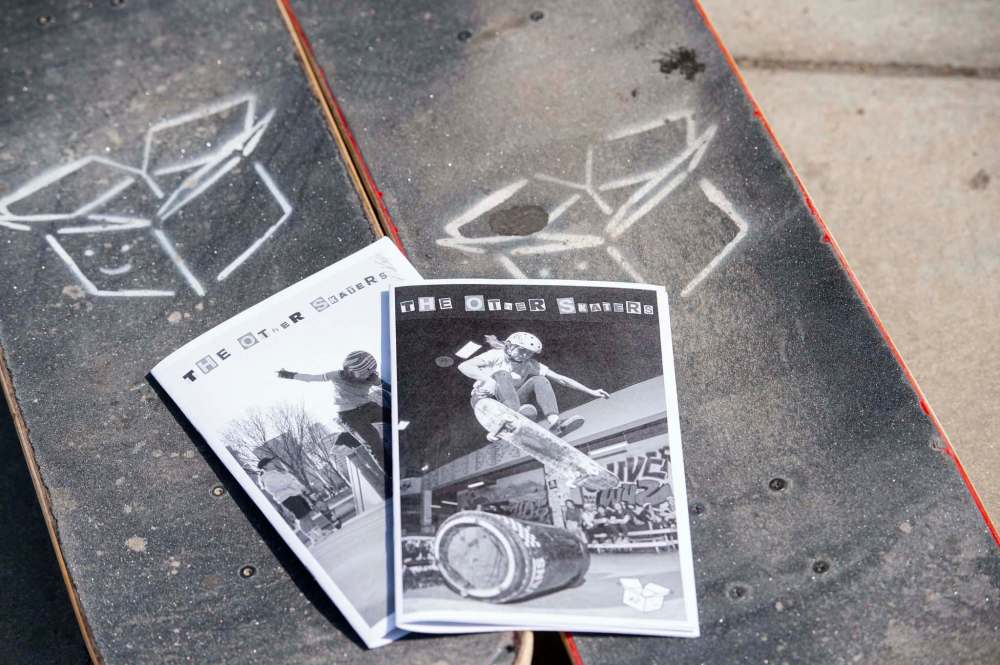
Back in the 2000s, Compayre says the skateboarding community lacked representation.
“I could probably count on one hand the number of Indigenous skaters I knew. I could count on two hands the number of female skaters I knew,” she says.
To help increase female representation of the sport, Compayre and the Skateboard Coalition of Manitoba worked with the Rugged Riders — a female skate crew — to put on Chicks Flip Out, a female-only skateboarding event held in Winnipeg at The Forks in 2008 and 2009.
“We were able to get female skaters from across Canada, some from the U.S. and one from Australia. The event was important because we really had so few female skaters in Winnipeg at the time,” she says. “Chicks Flip Out was a great opportunity for female skaters to feel included and supported. Honestly, just seeing that many females skating in one place at the same time was inspiring.”
When Compayre first learned skateboarding was being included in this year’s Summer Olympics, she had mixed feelings.
“At its roots, skateboarding is kind of this underground, DIY, off-the-beaten-path kind of thing. A non-sport that is now officially being introduced into this massive sport world,” she says. “However, I’d be a hypocrite if I stayed stuck in that mindset, especially as I was a member of the coalition, trying to help legitimize the culture in the province.”
Compayre hasn’t lived in Winnipeg for a decade but she says judging from what her skater friends tell her and what she sees on Instagram, the sport continues to diversify.
“There is more of a representation of Indigenous skaters, there are more girls attending sessions at the Edge Skatepark and there is more of a push for inclusivity for (the LGBTTQ+) community,” she says. “The trajectory is great and I’m hoping more female and non-traditional skaters will continue to find skateboarding, fall in love with it and feel included in the community.”
Maddy Nowosad and Emilie Rafnson
Maddy Nowosad met her girlfriend, Emilie Rafnson, at the Edge Skatepark at 333 King St. in 2019 — the two started dating four months later. Both skateboarders, they found a community of like-minded girls at the women’s and girls’ skate sessions held on Thursday nights.
“Five years ago at the Edge, there were maybe eight to 10 regular girls that came every Thursday,” Rafnson says. “Now, it’s grown to 25 to 30 regular girls. The non-traditional skate community is really starting to take off.”
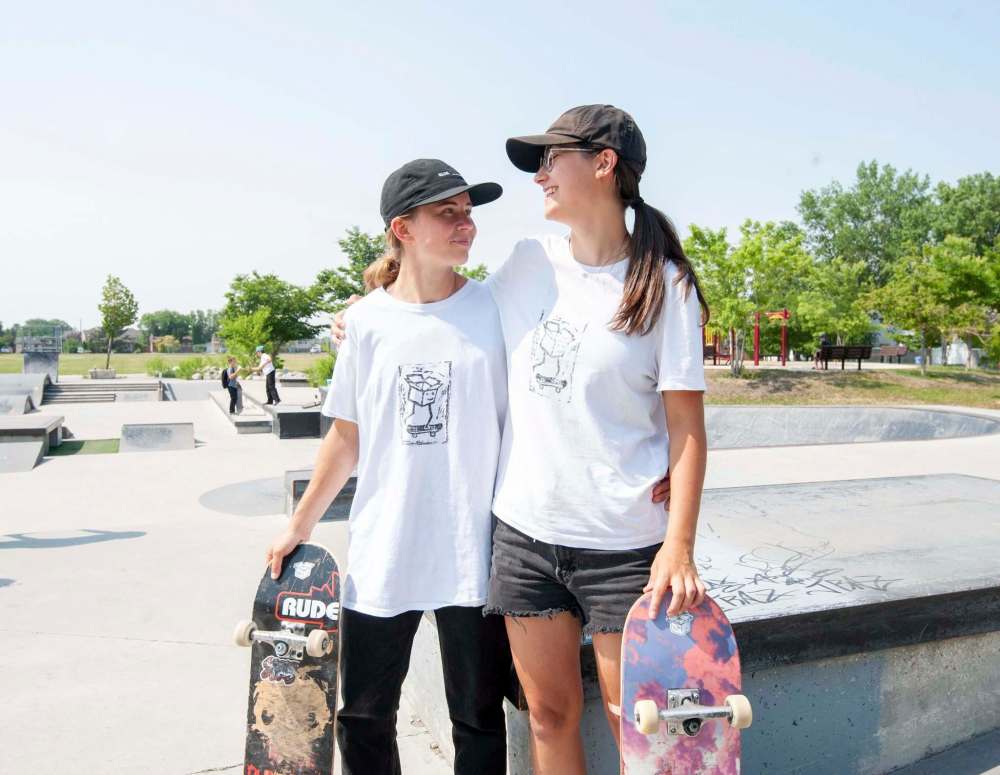
Both agree that skateboard parks can be intimidating and male-dominated.
“My parents didn’t think skateboarding was for girls because we never saw any girls at skateparks,” Rafnson says.
Tired of not seeing skaters with whom they identified represented in mainstream skate media and inspired by the women and queer individuals with whom they skated, Nowosad and Rafnson created a publication to showcase their community. The Other Skaters is a zine (pronounced ‘zeen’) — a self-published booklet of photos and stories printed in small batches — that highlights their community.
“The Other Skaters was created to amplify the voices and experiences of non-traditional skateboarders in Winnipeg, celebrate these individuals and inspire others to try skateboarding,” Nowosad says.
For Nowosad, “non-traditional skateboarders“ refers to those who don’t fit the white, heterosexual, cis-male (a person who was assigned male at birth and whose gender identity is male) stereotype — this includes anyone in the LGBTTQ+ community. Nowosad recognizes that an individual’s identity consists of multiple intersecting factors, including gender expression, race, ethnicity, class and sexuality.
The Other Skaters released its first issue last August. Since then, Nowosad and Rafnson have released two more, one in November and the most recent one in April.
“If you look at typical skateboard magazines, you don’t see a lot of women or non-traditional people,” Rafnson says. “We created The Other Skaters to give people a place to see themselves and people like them represented in the skate scene.”
While skateboarding magazines like Thrasher and Transworld Skateboarding have featured women in their pages, it’s rare. Thrasher is the longest-running skateboarding magazine with a circulation of about 100,000. Since its inception in 1981, there have been 488 issues but less than one per cent of them have featured women on the cover.
However, visibility and representation is growing. Thrasher recently published the features “The Top 10 Women and Non-Binary Skaters of 2019” and “Honour Roll 2020: The Top Women and Non-Traditional Skaters of the Year.”
Nowosad and Rafnson originally planned on printing a handful of copies of their zine to give to friends but the publication surpassed their expectations.
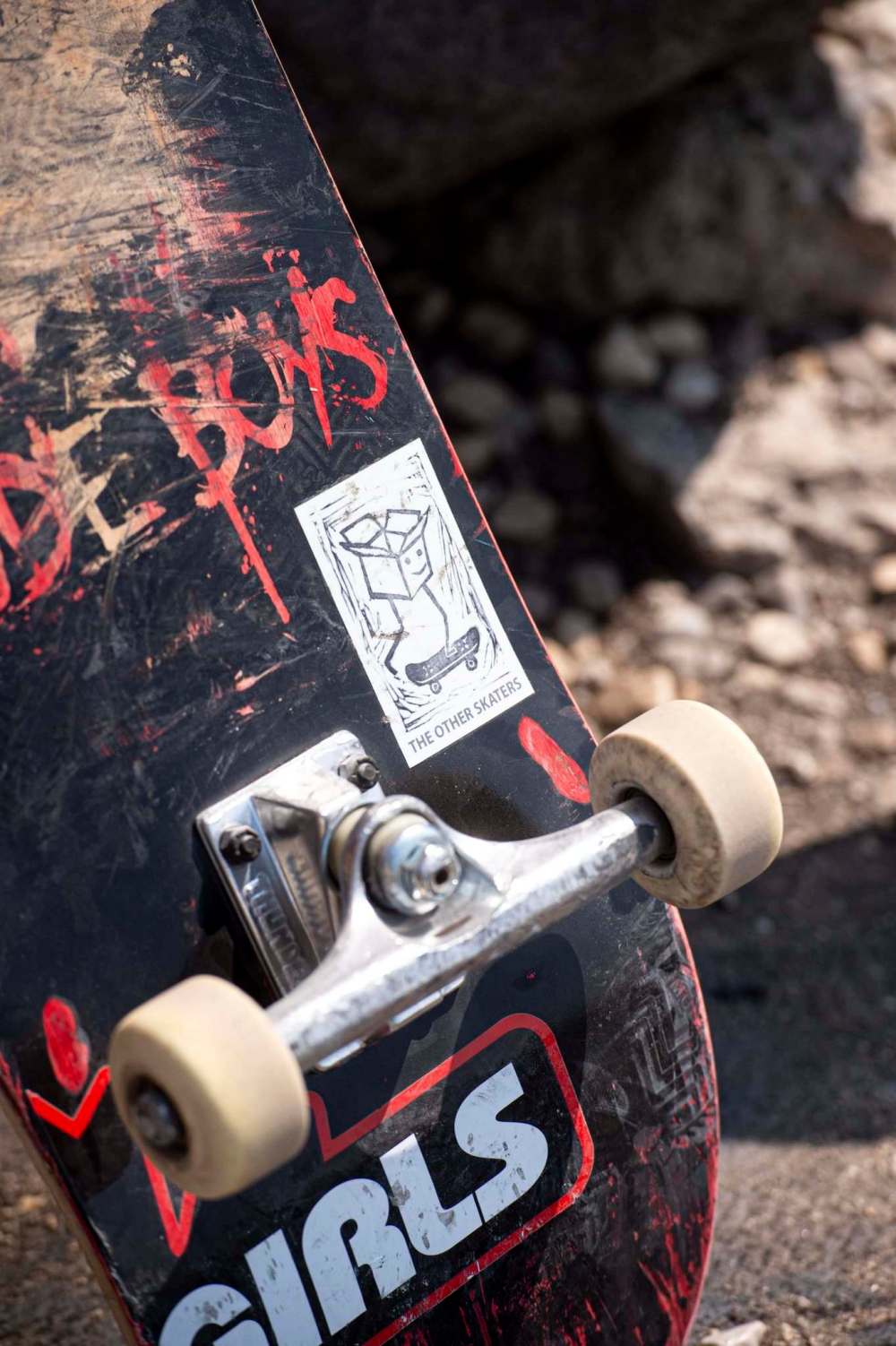
“The response has been amazing. We’ve sold hundreds of issues and they’ve been mailed internationally,” Nowosad says. “They’re sold in skate shops across Canada.”
Nowosad and Rafnson sell their zines for $5 each and all the proceeds go back into the zine and the community.
“We purchase skate supplies and we’ve recently received donations of used skate parts,” Nowosad says. “We’ve been putting together boards for people in the community who otherwise might not be able to access boards.”
Skateboarding has become a cultural force around the world, spreading from its birthplace in Southern California to communities as far away as South Africa and Afghanistan. Nowosad and Rafnson are excited to see skateboarding represented for the first time at the 2020 Summer Olympics.
“Female and non-traditional skaters don’t traditionally get as much recognition. The Olympics is a level playing field that hasn’t been very present in the skate scene,” says Rafnson. “(The Olympics) will help the scene grow and be a really good way for people to see female and LGBT skaters.”
sabrinacarnevale@gmail.com
@SabrinaCsays

Sabrina Carnevale is a freelance writer and communications specialist, and former reporter and broadcaster who is a health enthusiast. She writes a twice-monthly column focusing on wellness and fitness.
Our newsroom depends on a growing audience of readers to power our journalism. If you are not a paid reader, please consider becoming a subscriber.
Our newsroom depends on its audience of readers to power our journalism. Thank you for your support.
History
Updated on Monday, July 12, 2021 6:48 AM CDT: Formats text





